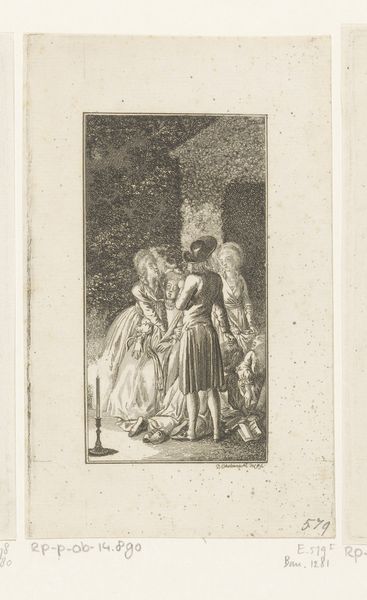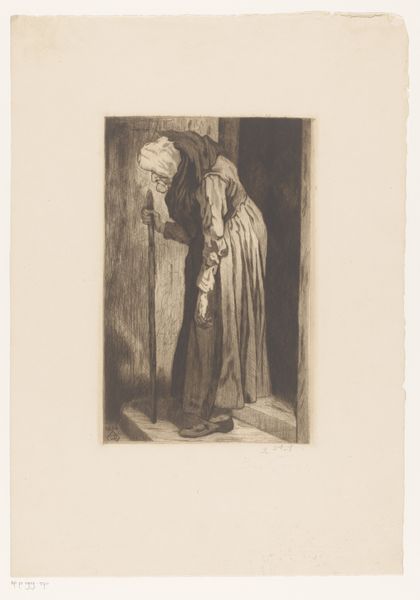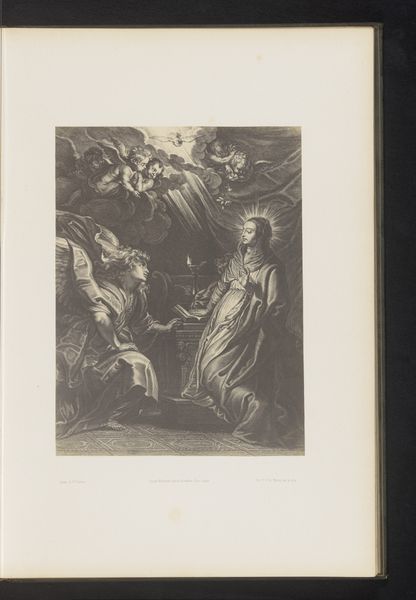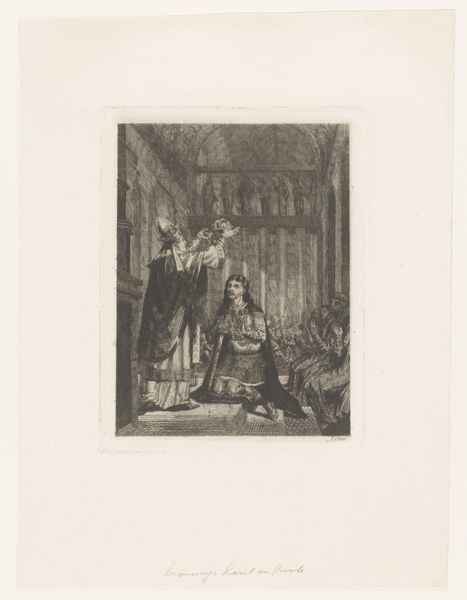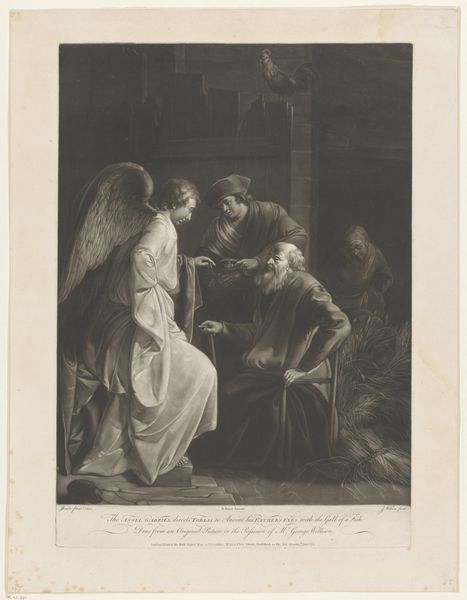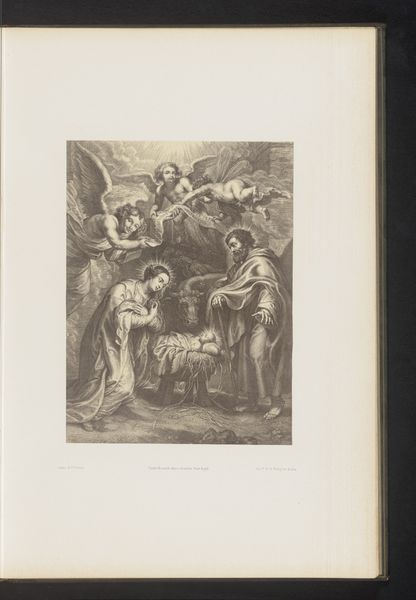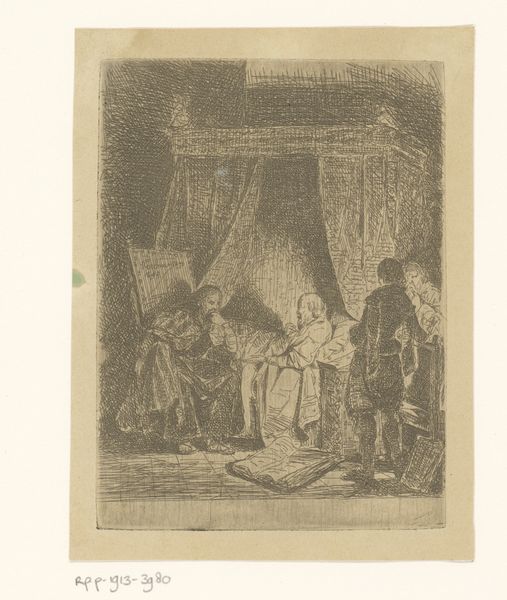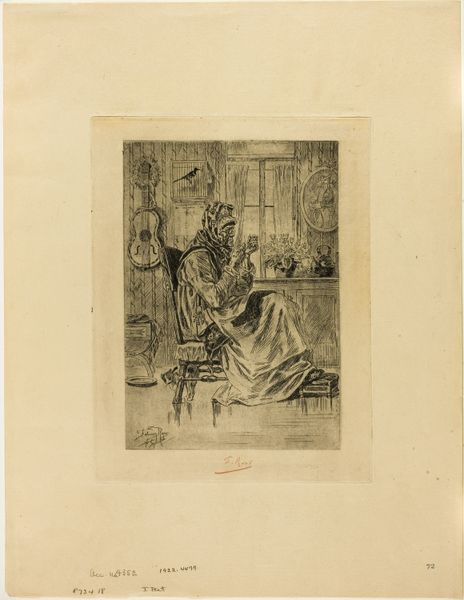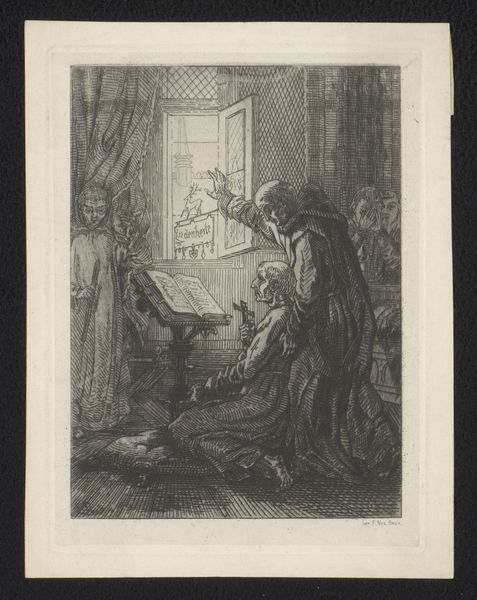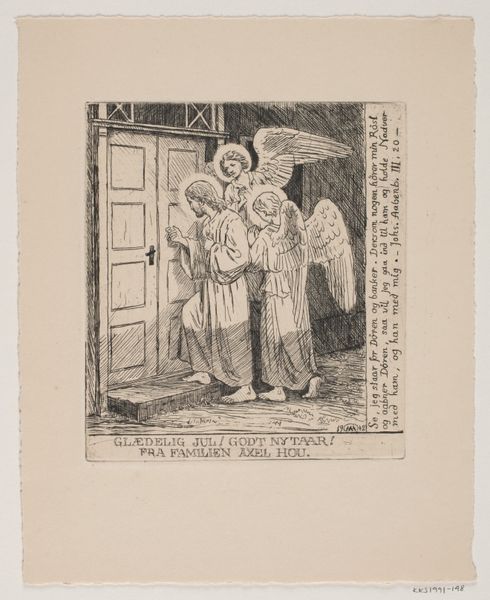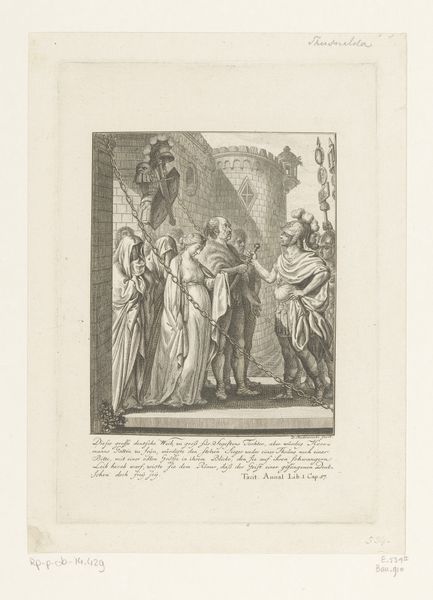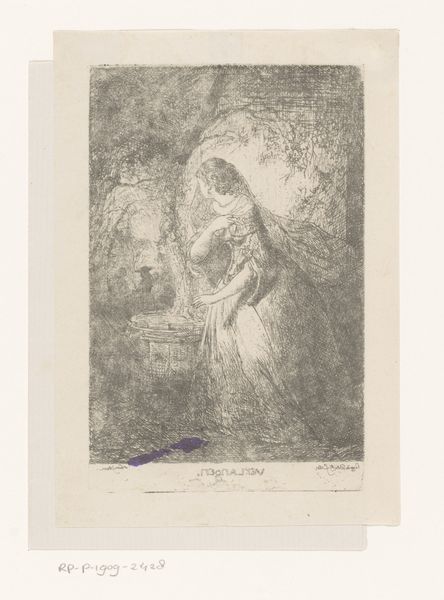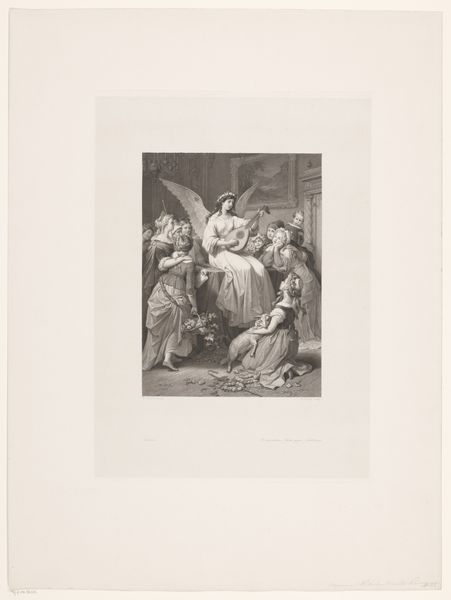
print, etching
#
portrait
#
medieval
# print
#
etching
#
history-painting
Dimensions: 314 mm (height) x 250 mm (width) (Plademål)
Curator: Welcome! Here we have Cilius Johannes Konrad Andersen’s etching entitled "Fra San Marcusfesten i Venezia" or "From St. Marcus’s Feast in Venice," created between 1910 and 1912. Editor: It has such a somber and reverential atmosphere. The dark tones and meticulous hatching create an almost palpable sense of solemnity. The stark contrast emphasizes the contours of the figures. Curator: Andersen often looked to history for subject matter. This print possibly alludes to a significant religious or civic event associated with St. Mark’s Basilica and the Venetian state. Consider that prints were frequently commissioned to commemorate key historical moments or reinforce political ideologies. Editor: Yes, I see that—note the almost uniform arrangement of figures and objects in a triangular configuration, suggesting stability, order, and visual weight, reinforcing the importance of the central figures. I see repetition in the clergymen's robes and headgear which further underlines this hierarchy. Curator: Indeed, this emphasis would signal institutional power and reinforce a distinct visual message to a wide audience given that prints circulated more easily than painting at the time. Editor: There is an intriguing textural variation, too, from the intricate folds in the clergymen’s robes to the smoother surfaces that reflect the candlelight—the differences lead to an aesthetically captivating whole, adding depth and dimension. Curator: Also, take note that Cilius was not the only Danish artist captivated by Venice and its history in the early 20th century; many artists found inspiration in its rich cultural past and architectural grandeur. The etching, as a reproducible medium, served to share these views. Editor: I was struck by the work's stark light and shadow—such dynamism gives the piece a very theatrical quality! It’s intriguing how effectively Cilius manipulated such subtle variations. Curator: Absolutely. Andersen used both technique and subject matter to remind viewers of Venice's place in both a historical and spiritual context. Editor: Ultimately, whether the specific historical moment remains known, Andersen offers us an unforgettable look into ritual and history! Curator: I agree; Andersen allows us to reconsider the potency of image making and its ability to frame historical narratives.
Comments
No comments
Be the first to comment and join the conversation on the ultimate creative platform.
